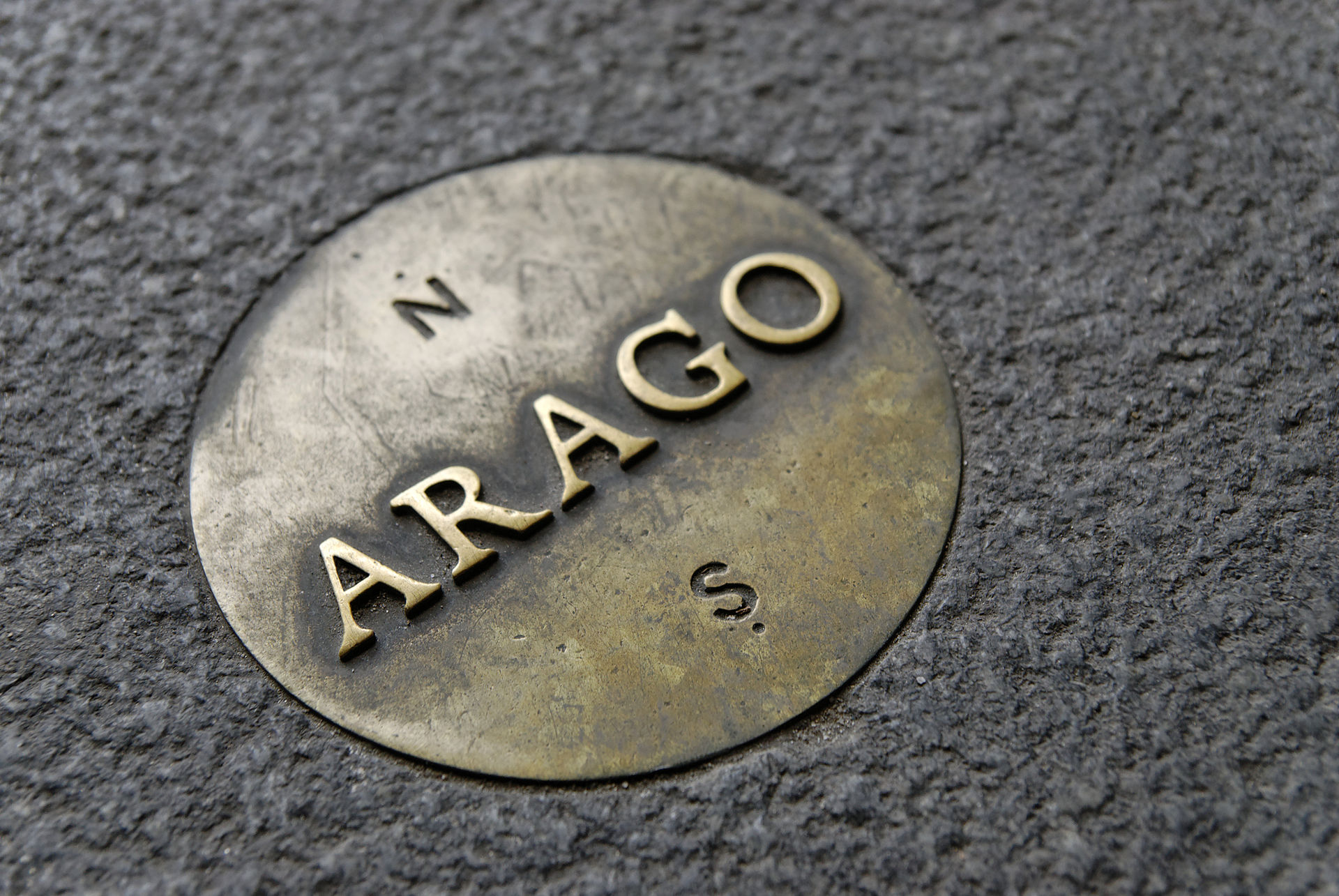Hommage à Arago
The Hommage à Arago is a public art work made up of a monument and a series of medallions scattered in the Parisian soil and aligned along the meridian of Paris. It was conceived in 1994 in honor of the French scientist and politician François Arago on the occasion of the commemoration of the bicentennial of his birth.
City Meridian
The project, realized in 1994, was proposed by the Dutch artist Jan Dibbets and takes the form of 135 bronze medallions. The idea of Jan Dibbets was to create a monument that evokes the personality commemorated (Francois Arago had worked on the metric system, linked to the measurement of the meridian of Paris) and took up a traditional material of the statues, while deliberately not monumental. 134 of these medallions are thus placed on the course of the meridian of Paris, from north to south of Paris, and are encrusted in the ground, while a last medallion is sealed vertically on the base of the old statue of Francis Arago. Situated at the Place de l'Île-de-Sein, where the meridian of Paris intersects the Boulevard Arago, it was dismantled and melted by the German occupation during the Second World War to manufacture weapons.
Each medallion measures 12 centimeters in diameter and bears in its center the name "Arago" in capital letters. Two notches as well as the letters "N" and "S", respectively for "North" and "South", allow each time to determine the direction of the meridian. Several medallions were replaced with a different motif during the commemoration of the green meridian in the year 2000. It is inscribed on them: "Year 2000 the green meridian" and points in relief to materialize the meridian of Paris.
The medallions were placed in various places, sometimes symbolic - such as on the site and in the building of the Observatoire de Paris (which defines the location of the meridian and where Arago was killed) in the Luxembourg garden, or Even inside the Louvre - sometimes ordinary.
The line they materialize is almost in the middle of Paris and crosses six districts (from north to south on the 18th, 9th, 2nd, 1st, 6th and 14th). The medallions extend over the 9 kilometers separating the Porte de Montmartre to the north of the Cité Universitaire in the South.
The project was initiated by the association of friends of Arago, then concretized by a public commission made jointly by the Ministry of Culture and the Francophonie (delegation to Visual Arts) and the Cultural Affairs Department of the Paris City Hall (Department of Visual Arts).
The Parisian road authorities, when they are required to move the medallions in order to carry out works, have undertaken to put them back in their place2. However, this is not always the case (for example, after the work on rue de Montpensier in 2006, the medallion was not replaced and has simply disappeared). On the other hand, some were stolen or covered and buried under loose soil (few of the 19 medallions installed at Parc Montsouris are visible today).
The monument is part of the movement of land art.
It appeared in 2003 in the novel Da Vinci Code by Dan Brown, in which the main character Robert Langdon uses the medallions to follow the meridian of Paris, called the Rose line in this book. However, on the route followed by Robert Langdon, there is in reality no medallion (the meridian of Paris does not pass by the inverted pyramid of the Louvre, but a hundred meters more to the east, to the point of the Small diamond): for the cinematographic adaptation of the novel, medallions were specially added.
- -- Thanks Wikipedia! [1]
